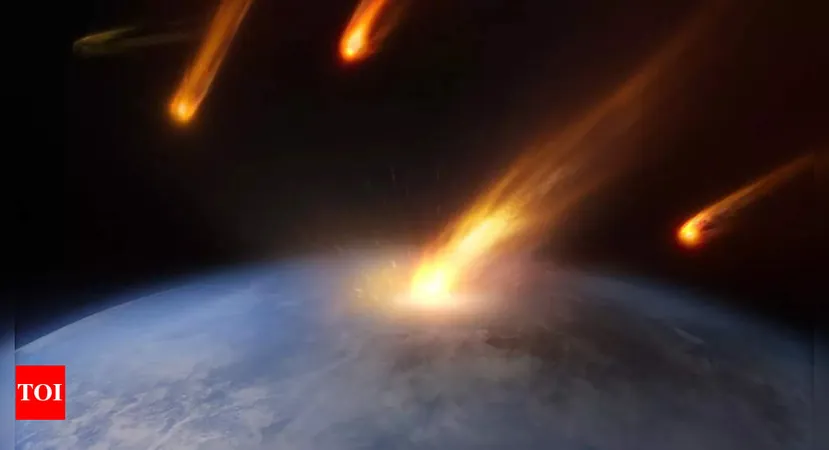
Asteroids Incoming: What You Need to Know About Double Trouble on January 3, 2025!
2025-01-02
Author: Ling
On January 3, 2025, Earth will witness a close encounter with two sizeable asteroids, designated 2024 YC9 and 2024 YL1.
According to NASA, both celestial bodies are expected to pass harmlessly by our planet, causing no risk to humans or infrastructure.
Asteroid 2024 YC9: A House-Sized Visitor
Asteroid 2024 YC9 is approximately 44 feet wide, roughly the size of a typical house.
It will make its closest approach to Earth at 10:17 AM IST, at a safe distance of 1,310,000 kilometers, which is slightly more than three times the distance from the Earth to the Moon.
This volcanic rock is hurtling through space at a remarkable speed of 31,293 km/h.
NASA's team of scientists is diligently tracking its trajectory due to its considerable size.
Asteroid 2024 YL1: The Bus-Shaped Asteroid
The second asteroid, 2024 YL1, is a bit smaller at around 38 feet—comparable to the size of a bus.
It is projected to pass Earth at a safe distance of 2,360,000 kilometers, approximately six times farther than the Earth-Moon distance, with its closest approach occurring at 11:33 PM IST.
This asteroid is traveling at a speed of 17,221 km/h.
Why Studying Asteroids is Crucial
Asteroids are fascinating remnants from the early solar system, primarily found in the asteroid belt between Mars and Jupiter.
Their study provides vital insights into the building blocks of planets and the processes that shaped our solar system over billions of years.
Each asteroid has a unique shape, size, and composition, which offers a treasure trove of information for scientists.
Beyond academic interest, monitoring asteroids is essential as some have the potential to collide with Earth.
This highlights the importance of tracking Near Earth Objects (NEOs) to assess any potential threat.
NASA, alongside other space agencies, employs advanced detection systems and deflection missions to safeguard our planet from hazardous asteroids.
The Importance of Planetary Defense
NASA and its international partners are on high alert for asteroids entering Earth's atmosphere.
In the past year alone, they successfully detected and monitored several space objects well before they approached our planet.
These advancements prove that planetary defense systems are effective and crucial in averting potential impacts.
Stay tuned as we continue to monitor the skies!
With such significant astronomical events on the horizon, understanding what’s coming can help alleviate concerns and prepare for future encounters with these fascinating celestial travelers.




 Brasil (PT)
Brasil (PT)
 Canada (EN)
Canada (EN)
 Chile (ES)
Chile (ES)
 Česko (CS)
Česko (CS)
 대한민국 (KO)
대한민국 (KO)
 España (ES)
España (ES)
 France (FR)
France (FR)
 Hong Kong (EN)
Hong Kong (EN)
 Italia (IT)
Italia (IT)
 日本 (JA)
日本 (JA)
 Magyarország (HU)
Magyarország (HU)
 Norge (NO)
Norge (NO)
 Polska (PL)
Polska (PL)
 Schweiz (DE)
Schweiz (DE)
 Singapore (EN)
Singapore (EN)
 Sverige (SV)
Sverige (SV)
 Suomi (FI)
Suomi (FI)
 Türkiye (TR)
Türkiye (TR)